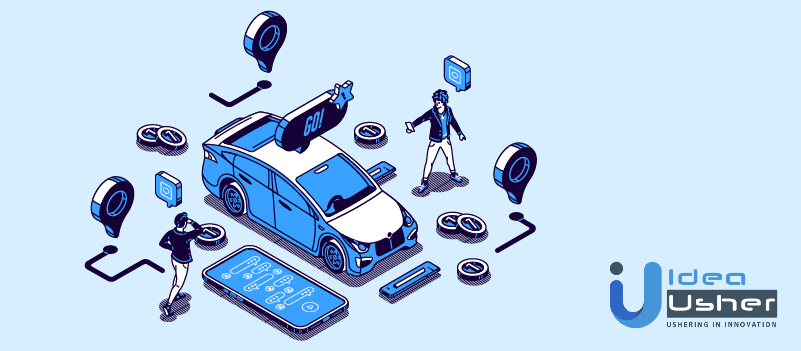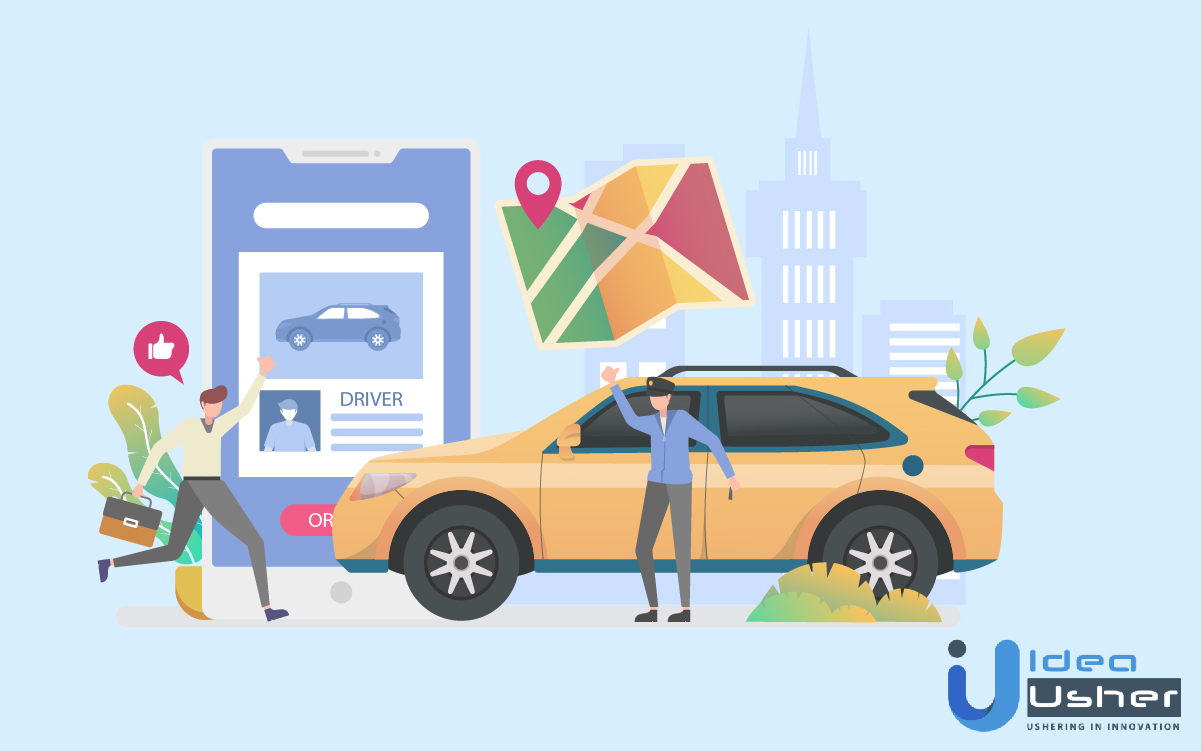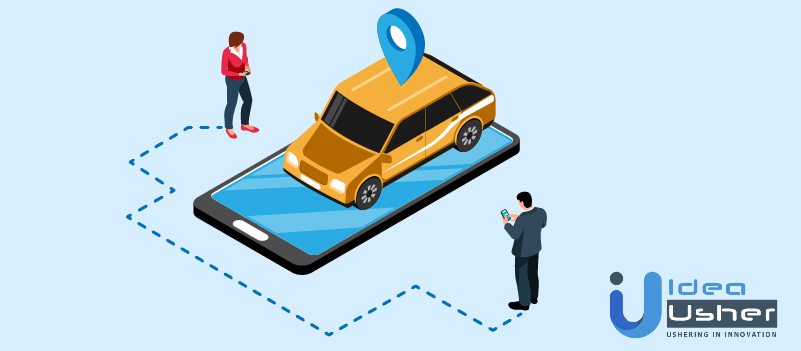Ridesharing and carpooling are currently both a business and a social pattern. In this blog, we’ll learn the basics of Carpooling app development and how significant it has become in recent years.
What is carpooling?
When people share a car, it is carpooling, in layman’s definition. Following the idea, one can deny utilizing poorly designed public vehicles and save on singular taxi booking costs. When people opt for carpooling, they save money and energy.
- In 2020, the ridesharing market took various structures.
- From Grab to Uber and Juno to BlaBlaCar, you can choose the assistance that best addresses and suits your needs.
How do these carpooling apps work?
A carpool is an important activity in the business of transportation.
It’s an activity between at least two individuals to make an ordinary trip in an unattended vehicle. It commonly happens when every individual alternates between driving the others.
In any case, other carpools have only one driver who drives each trip. There are no immovable protocols. It’s up to the individual conditions of those in your carpool.
A decent general guideline talks about the expense-sharing plans after completing each trip.
The users must determine the driving courses of action if there is an equivalent part in driving duties.
Furthermore, one should also cover the expense of sharing game plans.
The steps are simple.
Let me explain to you with an example.
You are tired of your whole day at work. The last thing you want to experience is the high fare of the cab you choose. Your exhausted self wants to rush home as soon as possible, but you refuse to pay a fortune to ride back home.
Here comes your savior, a carpooling app curated just for your needs.
You switch one of your apps, choose your destination, and adjust the maximum number of passengers you wish to travel with.
The number of passengers can range from 2 to 5. However, you feel comfortable. Not only does the cost per person reduce, but you also keep your sanity and safety first.
That’s all it takes for you to cut down on your traveling costs and easily handle the security of your daily expenses as well.
As a passenger, your comfort is the top priority for all the service businesses we see around us.
Not only is carpooling safe, but it also eliminates excess time and expense as well.
Nowadays, with additional features like booking your favorite driver, route segregation, etc., we feel much more secure choosing a carpooling app. You just have to book your favorite driver and leave the hassle of finding a decent, trustworthy driver aside.
How to begin a rideshare program?
You might have heard that carpooling app development is a lucrative business to start in 2021. You may be wondering about the investment that goes into it. From monetary to technical verticals, there are a lot of considerations for any entrepreneur.
We will focus on the technical aspects in this read.
What is Carpooling app development?
The idea behind carpooling or ride-sharing is simple. You pool in with a group of people in a cab to reach your destination seamlessly. This activity not only helps the user to save time but reduces the ride fare as well.
Carpooling should be possible with your companions, partners, or anyone you meet through ride-sharing applications like LYFT.
Vehicle sharing is a straightforward idea that decreases the general expense of driving. In simple words, consumers can save money while commuting.
The benefits of using a carpooling app in your daily work routine are endless. They are:
- We are saving costs and time.
- It furthermore assists with diminishing gridlock (traffic congestion) and fossil fuel consumption.
- Carpooling plays a significant role in diminishing excess air pollution.
- Reduces traffic congestion.
From the driver’s end, such carpooling apps provide a pathway and room for employment as well.
The present carpool-to-work and carpooling applications vary by structure. Here are few ways in which you can use the carpooling app:
- To utilize them, you must download the applications and continue with driver or traveler enrollment.
- You need to take a ride, and imprint picks up and drops accordingly.
- They pick riding accomplices and get their ride endorsements.
- A traveler can share the ride bill with companions and continue on a carpool trip.
- Rides can be paid ahead of time or not long after the trip finishes naturally.
How has it become significant in recent years?
Due to global warming, people are cautious about their commute decisions. They want to save the earth, so they are opting for carpooling. Companies see a market potential in this area to help these consumers.
Market share of carpooling app development in 2025.
- In 2024, the global carpooling (CaaS) market reached US $17.9 billion and is projected to exhibit a 10.6% CAGR from 2025 to 2034 globalgrowthinsights.com+9gminsights.com+9marketresearchfuture.com+9.
- Another source estimates the carpooling segment was about US $10.97 billion in 2024, rising to approximately US $12.68 billion in 2025—a 15.6% year-over-year growth blog.tbrc.info+1whatech.com+1.
- By 2025, projections place the broader carpooling market near US $12.76 billion, with a climb to around US $30.43 billion by 2034 (10.1% CAGR) .
🔹 Ride‑Sharing Market (Ride‑Hailing + Carpooling)
- Global ride‑sharing (ride‑hailing) revenue is forecast at US $72.0 billion in 2024, growing to US $86.3 billion in 2025, and soaring to US $366 billion by 2033 (~19.8% CAGR) vpnalert.com+9globalgrowthinsights.com+9straitsresearch.com+9.
- Another analysis cites US $131.96 billion in 2024, rising to US $157.02 billion in 2025 (19% CAGR), and doubling to US $341 billion by 2029 researchandmarkets.com.
- A further estimate pegs the market at US $149.9 billion in 2025, expanding to US $691.6 billion by 2034 (18.5% CAGR) precedenceresearch.com.
- Yet another variant places the 2024 valuation at US $69.1 billion, estimating growth to US $87.7 billion in 2025 and US $918 billion by 2033 (21% CAGR) straitsresearch.com.
🔹 User Penetration
- Ride‑hailing penetration grew from 18% in 2017 to an anticipated 28.6% by 2029 news.market.us.
- In the U.S., about 36% of Americans have used ride‑sharing services researchandmarkets.com+5market.us+5enterpriseappstoday.com+5.
- North American penetration was around 28.1% in 2023 .
✅ Updated Snapshot Comparison
| Metric | Previous (Zippia / Idea Usher) | Latest Estimated |
|---|---|---|
| Carpooling Market (2025) | $35.3 billion | $12.7–17.9 billion |
| Carpooling CAGR | 14–16.6% (2021–2026) | 10–15% (2025+) |
| Ride‑sharing Market (2025) | Not specified | $86 billion – $157 billion |
| Ride‑sharing Global CAGR | Not specified | ~18–21% (2025–2029/2034) |
| User Penetration | 22.4% → 28.8% by 2023 | ~28% (U.S./North America), 28.6% global by 2029 |
Necessary panels of the carpooling app
1. Traveler application
The end user, i.e., your customer, will have access to multiple features on the app. With the help of a few core features mentioned below, you can create an Uber-like application MVP.
- Signing in and individual profile
- Appointments
- Ride Tracking(GPS equipment mix)
- Valuing assessment
- Installments segment (outsider online installment administration mix),
- Split-the-charge choice
- Feedback and service ratings
- Notifications and geo-notifications
Additional administrational features:
- Arranged appointments
- Most loved driver demands
- Waitlisting
- Taxis demands (like UberSUV, UberBLACK, UberXL)
2. Driver application
Mandatory highlights under carpooling MVP are :
- Signing in and individual profile altering
- Route
- Woking according to the needs of the customers.
- Notices
- Income tabs
- Charging segment
- Correspondence with travelers
- Input segment and reference
- Continuous help button (SOS button)
- They have the option to share necessary information about the client’s experience. Such feedback can help the other drivers to act and choose their riders accordingly.
3. Administrator dashboard
Under the administration dashboard, the following features construct a better working space for the administrator.
- Observing drivers
- RouteTracking
- Incomes and payrolls
- Data set upkeep
For any carpooling app development, these three panels are a must-have.
How is a carpooling App different from a vehicle application?
Here, it is feasible for the partners to comprehend the difference between the vehicle application and the carpooling application.
1. Vehicle Applications
Vehicle applications focus mainly on the traditional way of booking cabs for trips in and out of the city. These bookings happen mostly over the telephone.
On the other hand, The idea began during World War II and acquired prominence during the 70s.
These traditional vehicle applications were created to make things simpler. All it took was a call to your designated driver and an agreement on a fixed date for the trip. And you were good to go. But on the other hand, a major issue that used to come up was the unavailability of the driver sometimes.
In contrast, carpooling applications provide an advanced solution to these problems.
2. Carpooling Application
Carpooling applications provide a platform for the user to choose from a group of cabs available on a particular time.
These applications focus on the Bluetooth network framework and are regarded as the most appropriate model.
It covers a major issue of not using a phone while driving.
These applications arrange advanced utilization of the standard vehicle applications.
Bit by bit, ride-sharing carpool applications have become the most advantageous mechanism for day-to-day use.
Hence, through this invention, the user’s expense diminishes, the climate is improved, and the social circuit is enhanced through carpooling.
Additional features used in a carpooling application
1. Enrollment and profile altering
A client could sign in through email or a web-based media account, add Mastercard information, or choose another best installment technique.
They also need to pick the profile picture. You can also link your social media accounts with the app to create a better network.
2. Appointments made in the Carpooling App.
The principal thing that draws clients’ attention is the convenience of usage. These apps provide a guide to help them enter a specific location or simply tap on the spot.
3. Tracking of the trips
This feature means it can advise you about the cost of your trip before you book a trip. The cost price varies with the distance you tend to choose.
The carpooling application additionally shows the users their driver’s area and makes reports on the ride.
4. Value the costs of each ride
A traveler could check the assessed cost of their ride with a specific vehicle type before an important booking.
Charges consistently depend upon the request made by the user.
However, the user can also apply for promotion coupons, which help them book rides at a lesser cost.
5. Choice of Installments.
There are a few choices for a traveler to cover the bill.
There is a complete programmed prepayment rule in certain nations, while in others, clients can pay with money without any hassle.
Fundamentally, carpooling applications favor credit-only in-application auto installments and cover costs inside the application.
6. Message pop-ups.
In carpooling app development, the application can showcase various notifications to the user. To keep them informed, the app sends notifications like the following.
- Status of ride
- Time appraisals
- Drivers’ s provide vehicle details (color, model, and number).
7. Contact and Feedback
Through this feature, the user can access the driver’s details like phone number, car registration number, etc.
A few choices are available to the driver where they utilize a similar carpooling application.
Additional features like
- Send messages
- Call drivers with one tap
- Rate and survey them when the outing finishes.
8. Individual profile
A traveler under the individual profile section can check a series of details, like:
- Booking history
- Individual positioning
- Can pick another profile picture
- The installment technique.
9. Booking ahead of time
You might need the cab longer than usual. For this situation, costs will be determined according to the inter-city fare, petrol and kilometers traveled.
10. Offers ways to split expenses
This feature is presently accessible in most carpooling apps covering local areas.
The user can discover companions’ profiles inside the carpooling application, use their telephone numbers, and split the last bill.
11. Lease a bike, order suppers, and more
In some areas like Paris or New York, ridesharing keeps an electric bicycle and bike-sharing organization altogether.
You can arrange some food from the most loved eatery, sending solicitations to UberEATS drivers.
12. Book your favorite driver
The feature offers you a chance to employ your favorite driver. Inclinations depend on the scores you provided for the specific driver after your last carpooling trip.
13. Shortlist
You know it’s cumbersome to revive the carpooling application again and again during top hours. To stay away from this routine activity, you could include yourself on a holding-up list.
The application will send you an affirmation when it is an ideal opportunity to book the cab.
How to develop a carpooling app?
Making your carpooling application like Arro or Grab mull over that your item comprises of three applications
- Traveler
- Driver
- Chief ones
(the last one could exist in the site structure as it were).
That makes the stage issue be handled differently. It influences your spending multiple times and is more contrasted with joint application advancement.
Steps involved in developing your carpooling app
Here are some steps –
Step A: Decide where the base of operations will be
The main priority for your carpooling app development is to maintain the number of users you enlist in your app. Daily, your service should circle offices, college-going students, or working professionals, and others in general.
As most of these users don’t have the liberty to buy a car or work in places far from their homes, the Carpooling app can do wonders.
Prepare your research accordingly. Offer surveys, online or offline. Promote your idea across various digital platforms. After reviewing all the answers, prepare your business to cater to those audiences at first.
Notice how they respond and how popularity can be increased. Once you see how your carpooling app development works, spread your boundaries, keeping geological areas in mind.
Step B: Choose your platform
You can choose between iOS and/or Android development platforms. Web applications are also an option here. It can also be scaled in the future, depending on the growth of your company.
At that point, think of specific stage highlights.
For instance,
- Android is the main stage in Africa, China, India, Africa, and Eastern Europe,
- iOS rules in Canada, the US, Canada, Japan, Australia, and Western Europe.
Interesting pointers that help you decide are:
- iOS clients are bound to be selective, making in-application purchases more frequently with every app purchase.
- You will be surprised that Android users can choose from many carpooling applications. iOS platform hosts a limited number of such apps at the moment.
- iOS clients are additionally more dependent on the cost and elaborate features than Android ones.
Step C: Prepare a budget
Building your ride-sharing app depends greatly on how accessible your app is.
The more accessible and glitch-free interface you prepare, the more customers are drawn to it.
To prepare a professional app, you will need to either hand over the construction part of a freelancer or outsource it through a company. Whatever the cost builds up, it will be a significant part of your expense throughout.
Always look for an economical and viable budget to build your carpooling app.
Cost to develop your carpooling app?
You may find general estimations for the number of hours required for carpooling application improvement in the past segment.
In the quest to know how to make a rideshare application or how to be an active part of carpooling app development, we need to do thorough research.
Here, we have listed a few segments defining the ridesharing app development cost structure.
1. Visionaries for your application.
- Strategy Specialist
- Researcher
- Business Analyst
2. Plan units when designing your layout.
- UI and UX Designer
- Information Architect
3. Tech unit
- Java (Kotlin) Developers for Android neighborhood applications
- Objective-C (Swift) Developers for iOS nearby things
- HTML (CSS, JavaScript) for cross-stage flexible applications
4. Quality Assurance
- QA Manager
5. Publicizing unit
- Advertiser
- Project supervisor
By picking a professional development team (a group from your country), you choose better control and profitability altogether.
However, people typically pay a ton. Depending upon the time region, language, and social lines, it could cause you a few dangers.
For nearby tech experts (before hourly rates examination), application development costs $740 ($80) per hour. In other areas, you may pay $40 per hour for similar application development.

Top 6 carpooling apps in 2024
Throughout these years, we have seen many on-demand mobile apps come to the surface. Genres like carpooling app development and grocery app development are becoming popular daily.
Users have, in a way, become solely dependent on their phones to do most things, from booking movie tickets to car rentals. Everything is available with just one tap.
We are here to discuss the ongoing trend among carpooling apps in 2021.
We accumulated a few statistics to give you a better insight into how carpooling app development works according to Zippia.
- In 2018, Uber’s worldwide net income added up to $11.3 billion.
- A year ago, 5.23 billion rides were conveyed by the Uber application.
- Lyft, another huge ridesharing supplier, is required to create $6 billion in income in 2020. They worked exclusively in the United States and Canada.
The following carpooling apps have become the top 6 best apps in the field of carpooling app development.
Let us begin:
1. Carma Carpooling
Carma separates itself as a carpooling application instead of a ridesharing application.
Here are a few features that comprise the functionality of Carma Carpooling.
- The application allows clients to share driving expenses with neighbors and associates in a similar way.
- Riders pay $20 for every mile, standard, which implies drivers don’t make a benefit.
- When the outing begins, a clock on the application monitors the routing distance and naturally pays the driver when the trip ends.
- As a shared worker coordinating carpool applications, the organization is chipping away at a joint effort with government offices.
- Mainly to dispatch carpool networks in Texas, Washington, and California.
“Since Carma drivers essentially use it on their approach to and from work, they never need to reroute to different objections,” said Product Manager Emmett Murphy.
2. Sidecar
Sidecar’s huge quality is that travelers consistently know the cost of the ride forthrightly.
A traveler can pick from vehicles in the space dependent on profiles that incorporate subtleties like
- Distance
- Nature of the vehicle
- Admission
- Rider audits (whatever other bio information the driver has included.)
A few features that help Sidecar to make a stand of its own are
- Travelers can choose the most loved drivers
- The drives can be arranged according to the highest point of the traveler’s choices list.
- Most of the time, the likability of the use changes wherever the driver is on the web.
- If he is close by when the rider is looking, the cab immediately books accordingly.
3. Uber
Uber started as a startup and now has built a huge platform of its own. People from across the globe are switching to Uber as their mode of transportation. With trustable and supportive organizations backing their work, uber has undoubtedly become an integral part of the carpooling app development.
Here are a few features that make Uber stand out from the crowd.
- Uber matches travelers booking rides with drivers dependent on the GPS area of the traveler’s telephone.
- The application sends driver contact data to the traveler and a book when the driver shows up.
- Uber can cite charges and permit installment with Mastercard.
- The traveler can leave an audit to rate how well the ride goes.
- The clients can demand ordinary vehicles, cabs, SUVs, and dark vehicles of expanding extravagance.
- Uber gets the solicitation of the travelers’ rides with drivers dependent on the GPS area of the travelers.
- The driver acknowledges the traveler’s request and gets the traveler’s contact data.
- The booking traveler gets an expected expense during the taxi, showing uptime, including an assessed drop time.
4. Lyft
Lyft allows clients to demand a ride and provides tremendous help to the users to book a seamless trip.
Here are a few features that help LYFT become famous as an application.
- Each driver needs to pass a DMV check and individual verification before he can begin.
- The application prompts the traveler to pay toward the ride’s finish by putting away charge card data.
- A few urban areas work on a gift premise instead of a set charge, so a superior driver may acquire more.
- The organization works in 640 urban communities in the US and nine metropolitan areas in Canada.
- They are primarily offering vehicle rides, bikes, and a bike-sharing framework.
- It is not difficult to use as individuals looking to carpool for significant distances can contact the driver.
5. Rideout
Rideout does both on-request and booked rides for the user.
The process of booking a cab under carpooling goes as follows:
- After sending a solicitation, the traveler trusts that the driver will acknowledge.
- The traveler can look at the driver’s subtleties, including area and kind of vehicle.
- At the point when the ride finishes, the traveler pays and rates the driver.
Rideout likewise lets the client browse the following features:
- Taxis
- Town vehicles
- SUVs
- Limos
- Chief transports
“We additionally offer bargains at neighborhood foundations and occasions for clients who use Rideout for transportation to places that offer Rideout bargains,”
Said Rideout Founding Partner Brandon Cunningham.
6. Blabla Car
A fact to focus on:
There are a few rideshare applications where you can easily switch driver-and-traveler situations with one application.
This shortcoming has been covered by a new brand called BlaBla Car.
BlaBlaCar has become a new entrant in the carpooling app development business.
This brand offers many different varieties. It also has a few features that even the typical carpooling apps don’t.
For example:
- A specialist co-op (a driver) and its customer should have an approach to address their contention issue rapidly.
- In addition, they fix charge ruins brought about by the program or request help in crises.
- Add all-day, everyday support upkeep to your spending plan.
- It is essential to calculate driver licenses and vehicles before adding them to the carpooling framework.

Conclusion
Carpooling and car sharing in India and the USA have become a source of comfort and relaxation among the audience.
We know no one likes to spend irrationally on just a ride back home. Public transport is not always safe and secure, and riding alone seems to be a burden again.
Hence, Carpooling apps in the USA and many other countries have seen an enormous surge in popularity among users.
It not only saves time and cost but is proven to be a reliable service. Contact us now if you want to attract clients like a magnet and scale your carpooling app development!
Choosing Idea Usher as your Carpooling app developers
Building a carpooling app and being an active participant in the carpooling app development takes a lot of time and knowledge. It involves thorough research, but necessary steps like design and interface must be checked.
Idea Usher aims to provide the best platform to try your idea until execution. But we don’t stop there. We plan to offer you all the available facilities like design, planning, organizing, and promoting your app.
Your idea is our mission. And we aim to fulfill it at all costs. With economical and viable solutions from our end, your plan will look as intact as you want.
Work with Ex-MAANG developers to build next-gen apps schedule your consultation now
Faq
Q: How do I create a carpool app?
A: Crafting a carpool app involves planning, developing, and building a user base. First, define your target audience and unique selling proposition (USP). Key features include user profiles, smart matching algorithms for compatible riders and drivers, booking systems, and real-time tracking. You can leverage app development platforms for a basic start, but complex features might require a professional development team.
Q: How do I create a ride-sharing app?
A: Ride-sharing apps share features with carpool apps, but might cater to a broader audience or offer additional services. The core functionalities remain similar: user profiles for trust, matching systems for efficiency, booking for convenience, real-time tracking for safety, and in-app messaging for coordination. Business models can involve transaction fees, subscriptions for premium features, or partnerships with relevant businesses.























